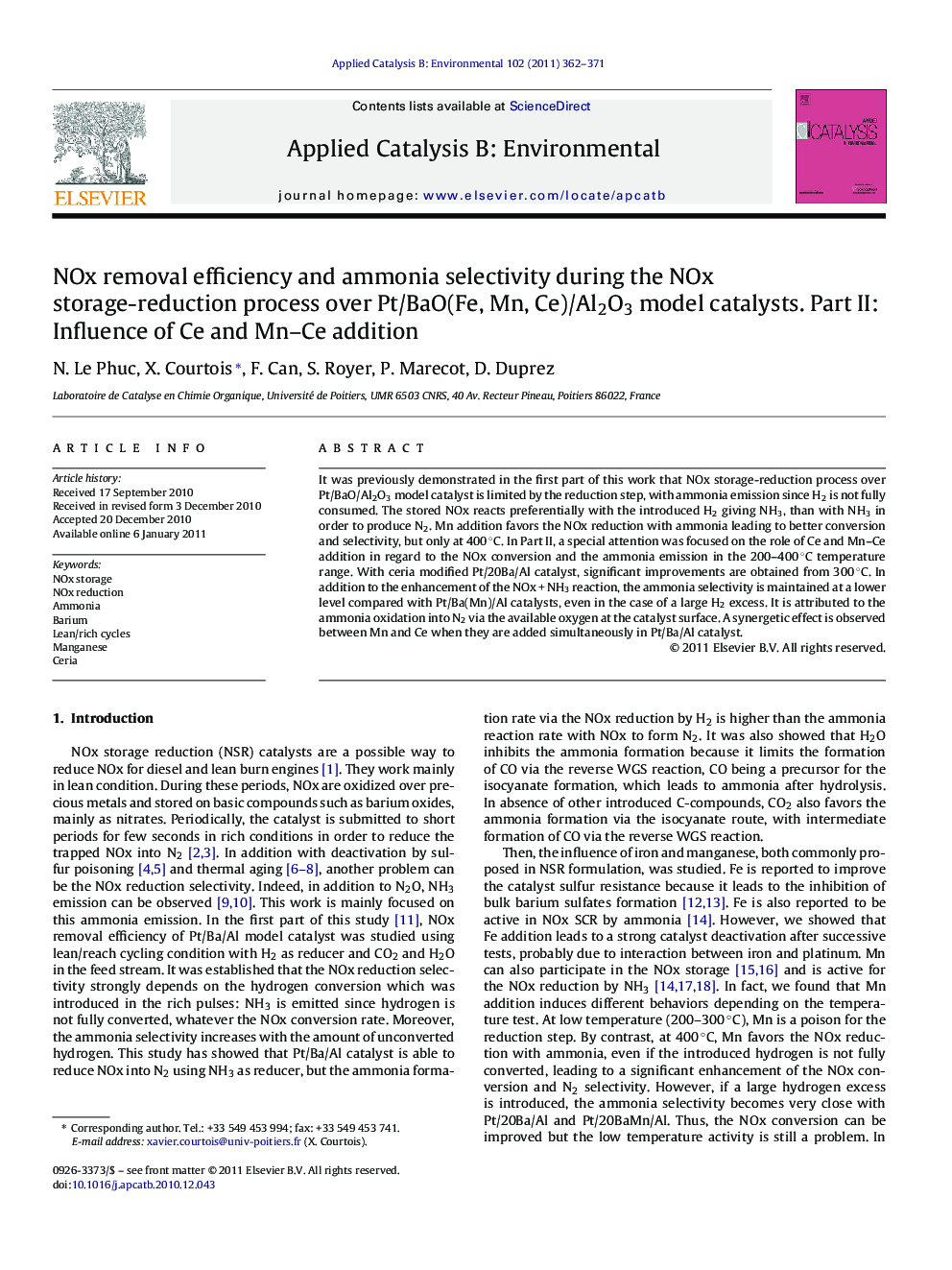| Article ID | Journal | Published Year | Pages | File Type |
|---|---|---|---|---|
| 47099 | Applied Catalysis B: Environmental | 2011 | 10 Pages |
It was previously demonstrated in the first part of this work that NOx storage-reduction process over Pt/BaO/Al2O3 model catalyst is limited by the reduction step, with ammonia emission since H2 is not fully consumed. The stored NOx reacts preferentially with the introduced H2 giving NH3, than with NH3 in order to produce N2. Mn addition favors the NOx reduction with ammonia leading to better conversion and selectivity, but only at 400 °C. In Part II, a special attention was focused on the role of Ce and Mn–Ce addition in regard to the NOx conversion and the ammonia emission in the 200–400 °C temperature range. With ceria modified Pt/20Ba/Al catalyst, significant improvements are obtained from 300 °C. In addition to the enhancement of the NOx + NH3 reaction, the ammonia selectivity is maintained at a lower level compared with Pt/Ba(Mn)/Al catalysts, even in the case of a large H2 excess. It is attributed to the ammonia oxidation into N2 via the available oxygen at the catalyst surface. A synergetic effect is observed between Mn and Ce when they are added simultaneously in Pt/Ba/Al catalyst.
Graphical abstractFigure optionsDownload full-size imageDownload as PowerPoint slideResearch highlights► Mn addition to Pt/20Ba/Al improves the NOx reduction only at 400 °C. ► Ce addition to Pt/20Ba/Al improves the NOx reduction from 300 °C. ► Enhancement is attributed to the improvement of NOx + NH3 reaction for Mn and Ce. ► Ce also favors the NH3 oxidation into N2 via its available oxygen. ► A synergetic effect was observed between Mn and Ce in Pt/20BaMnCe/Al catalysts.
